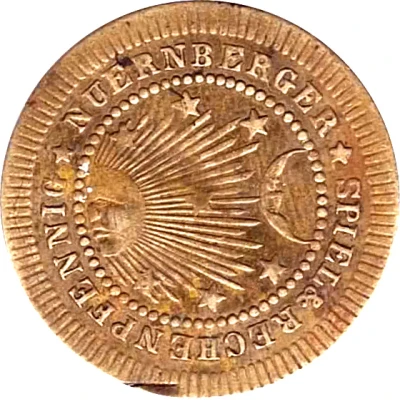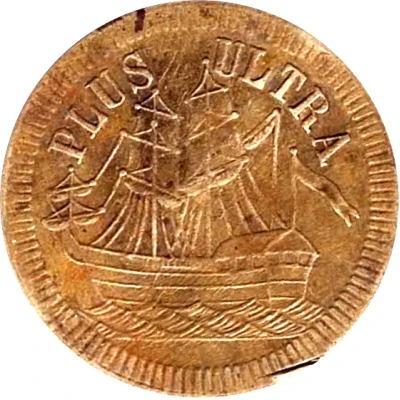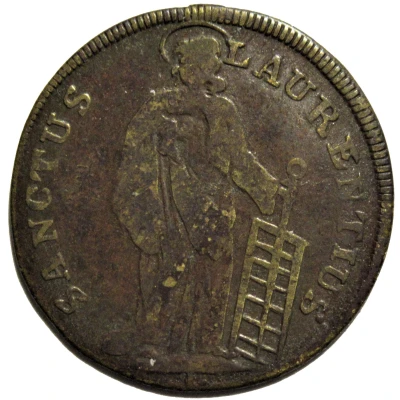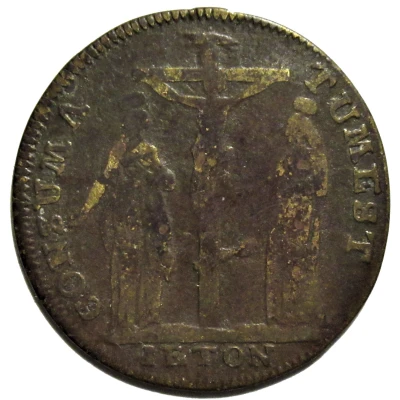
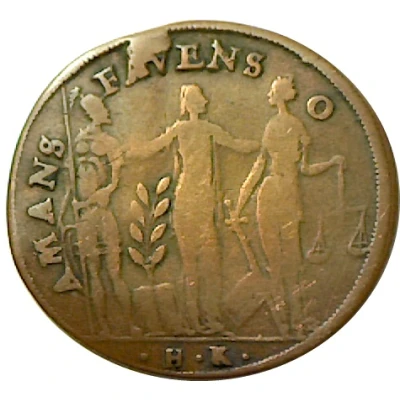

© ZacUK
Counter Token - Pietate et Iustitia (Nuremberg) ND
| Copper | 4.6 g | 28 mm |
| Location | Free imperial city of Nuremberg (German States) |
|---|---|
| Type | Utility items › Counter tokens |
| Composition | Copper |
| Weight | 4.6 g |
| Diameter | 28 mm |
| Thickness | 0.5 mm |
| Shape | Round |
| Orientation | Medal alignment ↑↑ |
| Demonetized | Yes |
| Updated | 2024-11-14 |
| Numista | N#84893 |
|---|---|
| Rarity index | 92% |
Reverse
Three standing figures - the centre figure holding the shoulders of the other two figures. Mars (left) standing leaning on his spear, Justice (centre) standing with tablets of the law by feet, Piety (right) standing with sword and scales (open Bible by her feet). Lettering around, Mintmaster's initials in exergue. Toothed border.
Script: Latin
Lettering:
AMANS FAVENS O
·H·K·
Translation:
Patriotic favouring O
Hans Krauwinckel
Engraver: Hans Krauwinckel
Edge
Plain
Comment
A Nuremberg jeton issued by Hans Krauwinckel II, c1588-9. Mitchiner 1598. The jeton is of Franco-Allegorical type and depicts Piety and Justice.Jeton Rechenpfennig H. K. (Hans Krauwinckel in Nürnberg?).
Hans Krauwinckel: Nuremberg Master. He signed his first token in 1586 and was in operation until 1611 (?).
Type: Hans Krauwinckel II (M1598-1638): 1586-1635
Approximated jeton date of 1588.
The Franco-allegorical German Nuremberg Jeton , Hans Krauwinkle of the late 16th century C 1588 - 1599 AD. This series of jetons is of the Pietate et Iustitia (Charles IX type). Many of these designs have been adapted from those of official French jetons struck by Charles IX (1560-74). Hans Krauwinkle maintained close commercial links with France, and it may well be that the present series of jetons was designed specifically for marketing through his commercial outlet. A number of these issues are fairly commonly encountered, but it does not seem likely that they were struck for any long period after their introduction c 1588 -89, because of the number of different dies used for design was very restricted. The introduction of this various series of pictorial jetons during the late 1580's also shows considerable technical and conceptual advance, beyond the mundane forms of thin brass stock jeton which were to remain in use alongside these new pieces. In many respects the pictorial jetons of the late sixteenth to early seventeenth century represent the highest achievements of the Nuremberg masters in this field.
